Vatican and St. Peter's Basilica
Back to Italy 2016 Index
Colosseum
Rome - Around the City
Rome at Night
Rome Bus Tour
There is too much to see here. Rick Steves said something to the effect that if you
want to ponder eternity, you should try to see the whole vatican museum collection.
The Vatican Museums trace their origin to one marble sculpture, purchased some 500 years ago:
the sculpture of Laoco÷n and his Sons was discovered 14 January 1506, in a vineyard near the
basilica of Santa Maria Maggiore in Rome. Pope Julius II sent Giuliano da Sangallo and
Michelangelo Buonarroti, who were working at the Vatican, to examine the discovery. On
their recommendation, the pope immediately purchased the sculpture from the vineyard owner.
The pope put the sculpture of Laoco÷n and his sons on public display at the Vatican
exactly one month after its discovery.
Vatican Museum
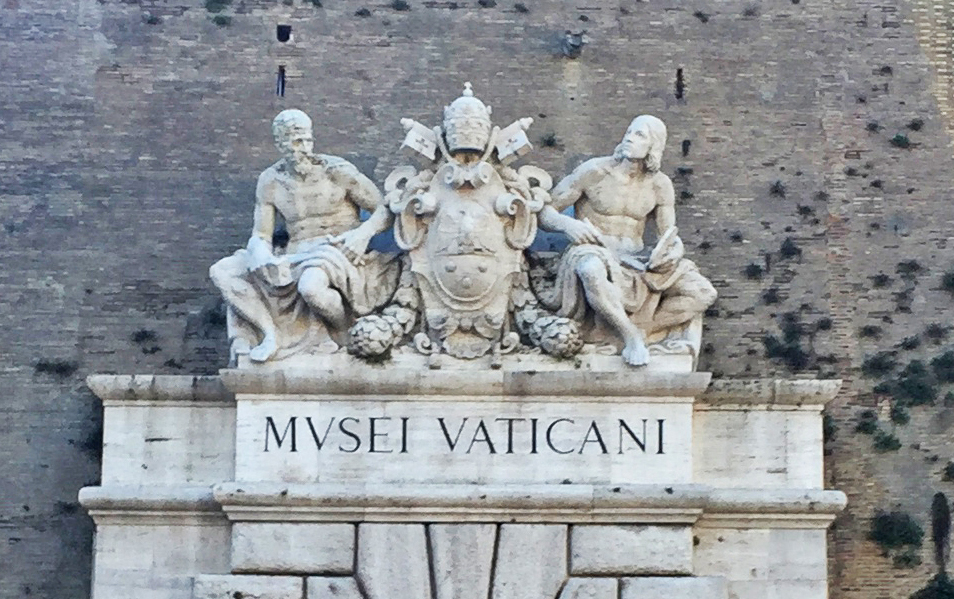 |
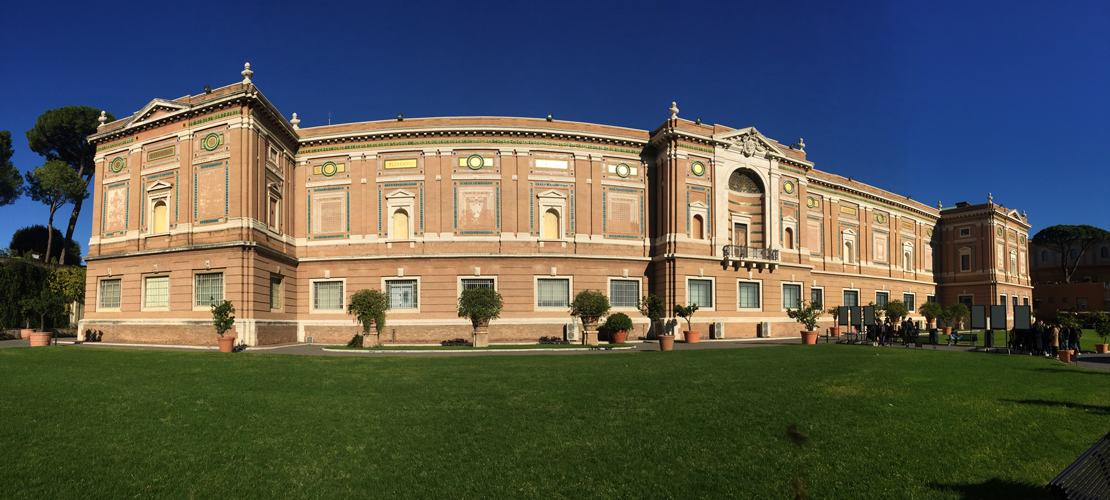 |
| Vatican Pinakothek
- Vatican Painting Gallery. In 1932 Pope Pius the Eleventh ordered this separate building built for the masterpieces.
Architect L. Beltrami. |
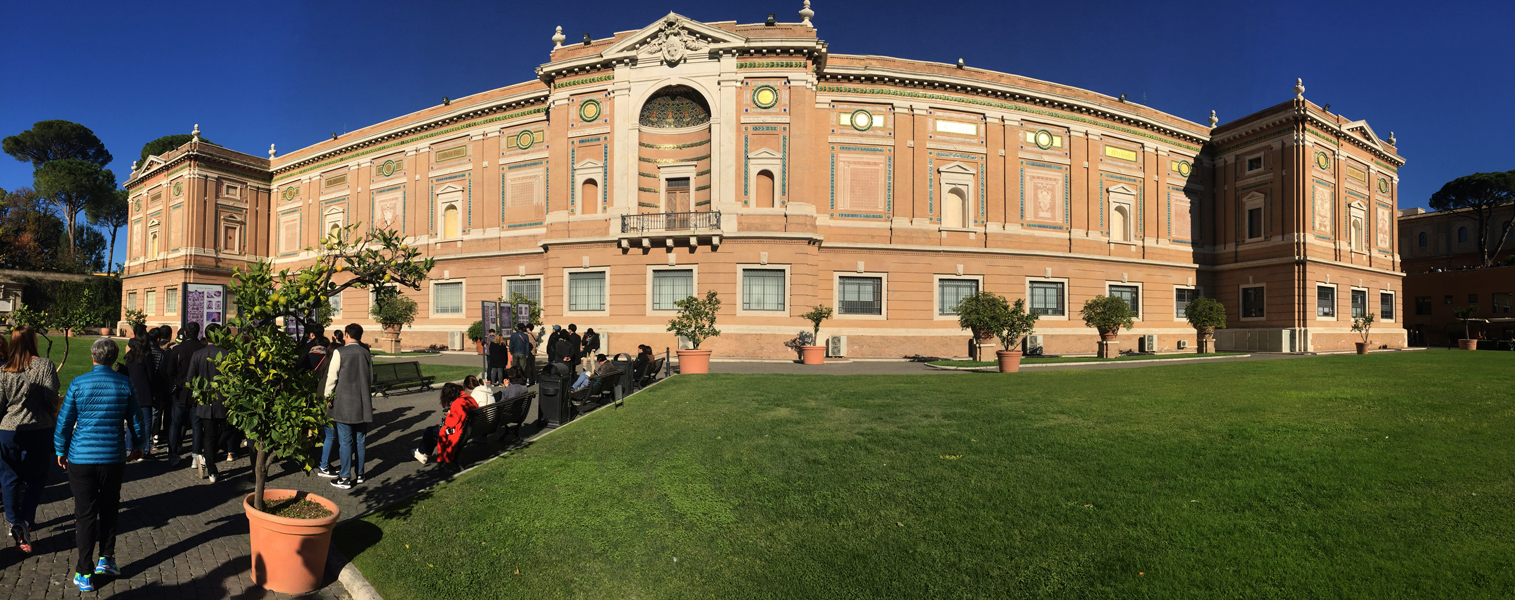 |
| The
poster stations are where tour guides explain what will be seen in
the Sistine Chapel, since no talking is allowed inside, and no photos
may be taken. |
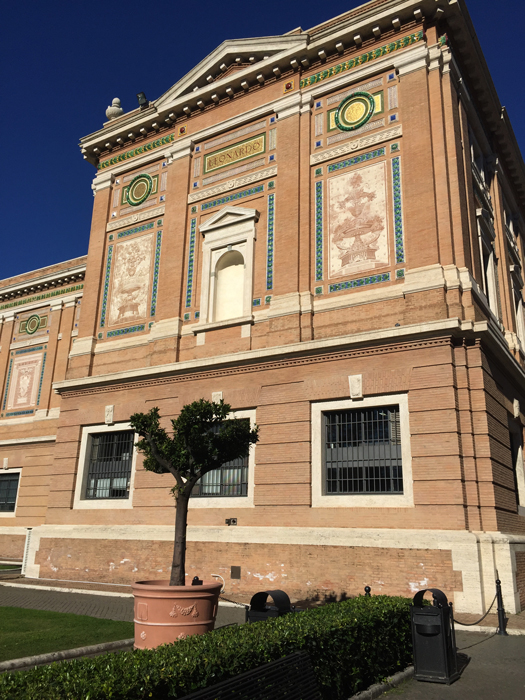 |
| The gilded panels along the roof line contain names of artists whose work is on display inside. |
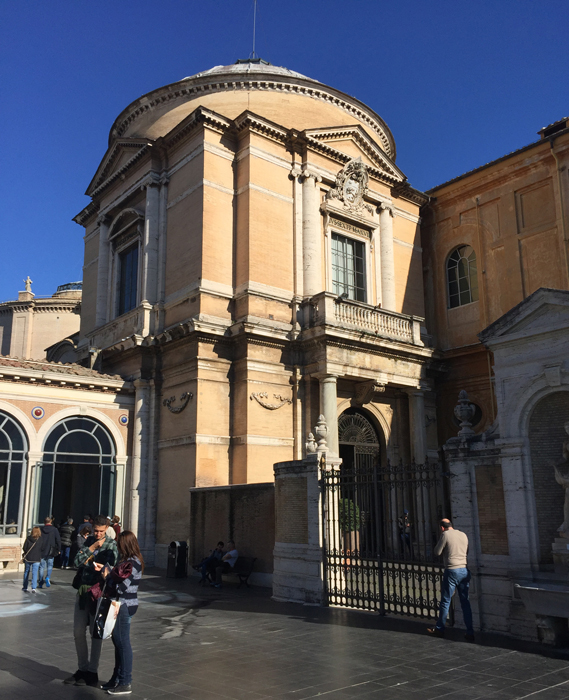 |
| Entrance to the Museum. |
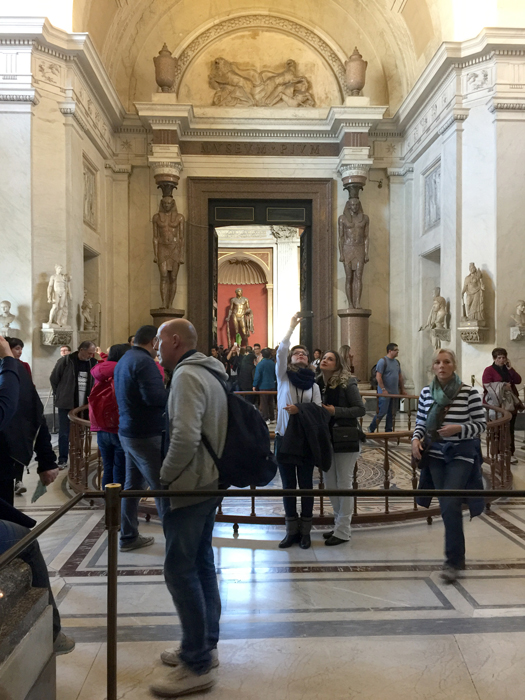 |
Most of these photos are of the ceiling vault art, since it is difficult to get photos
of art on the walls due to the crush of people kept in a constantly moving line. We
walked the length of a few halls, then entered the sistine Chapel (no photos allowed).
After exiting, we visited St. Peter's Basilica.
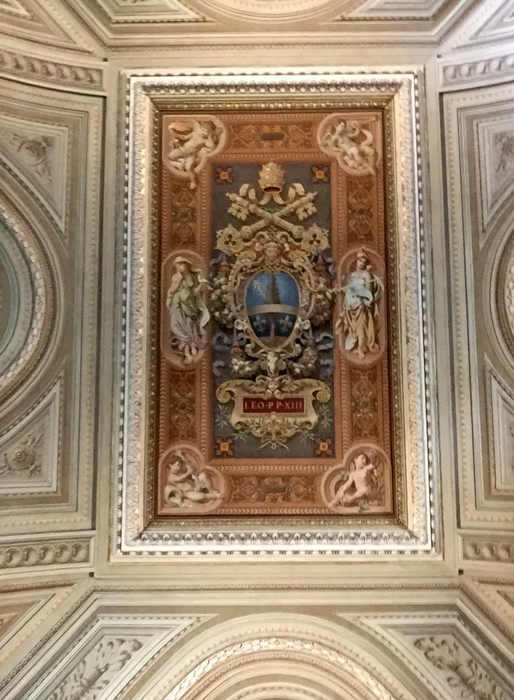 |
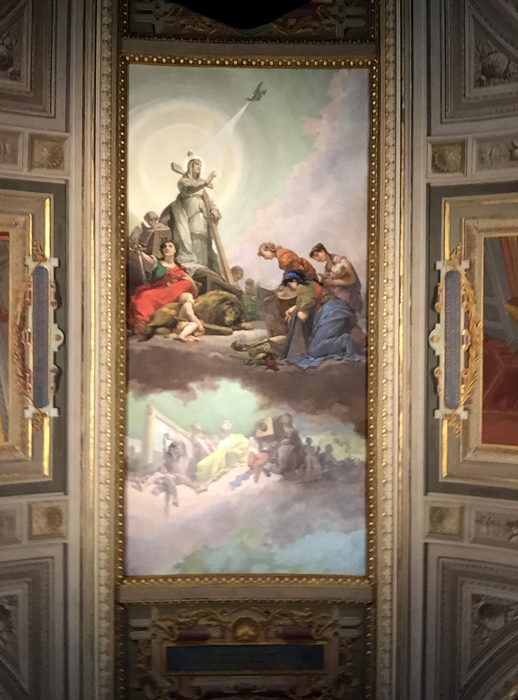 |
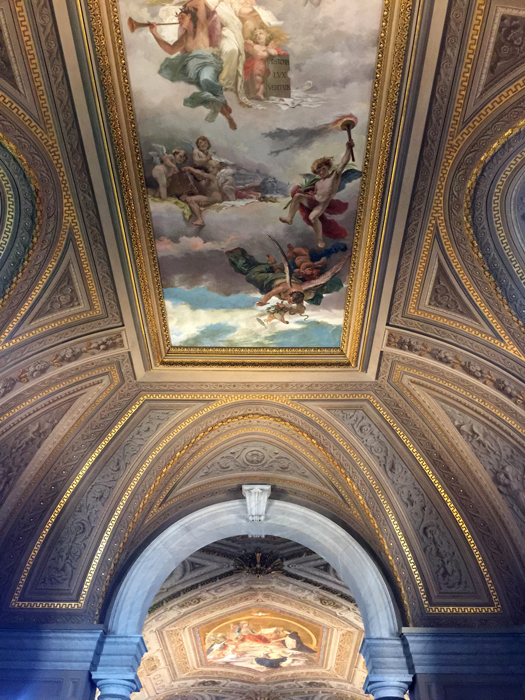 |
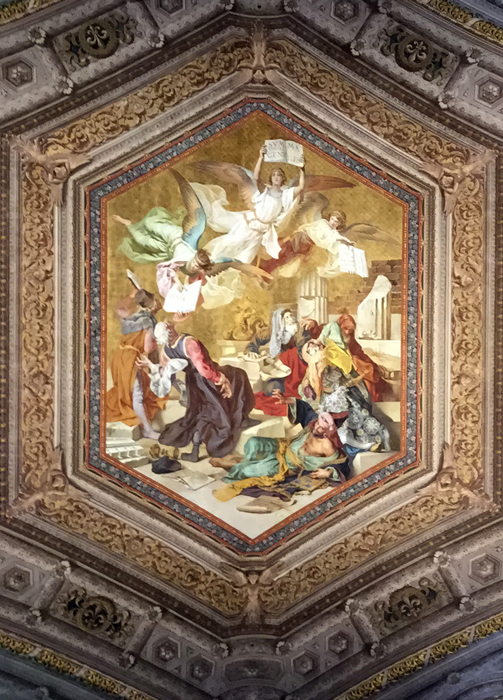 |
Tapestry Details
These tapestries are just stunning. They are so finely crafted that they look
at first glance like paintings. It took years of painstaking work to complete each one.
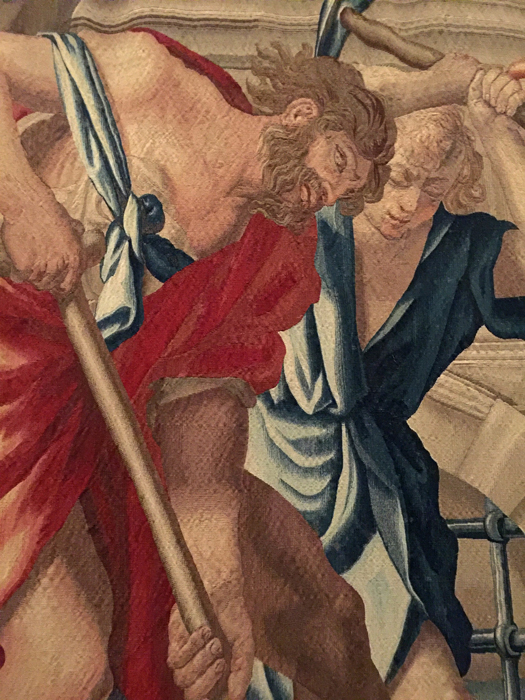 |
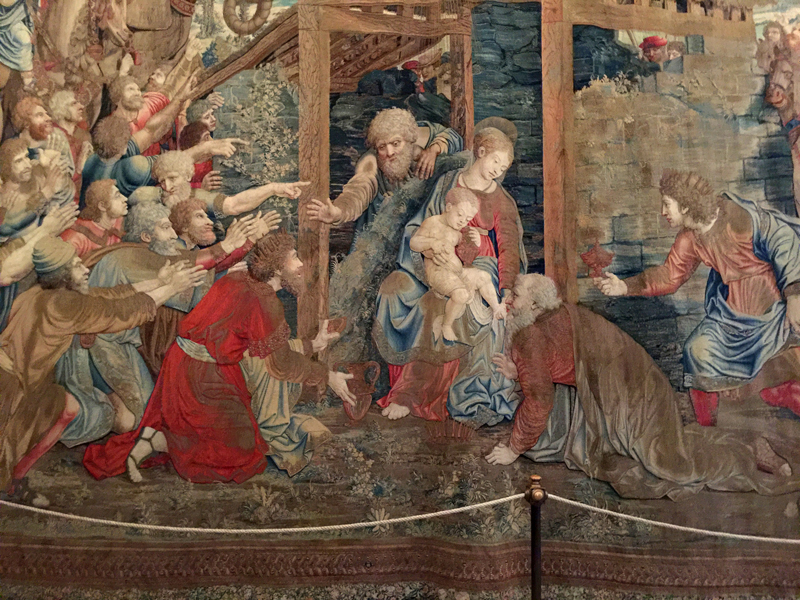 |
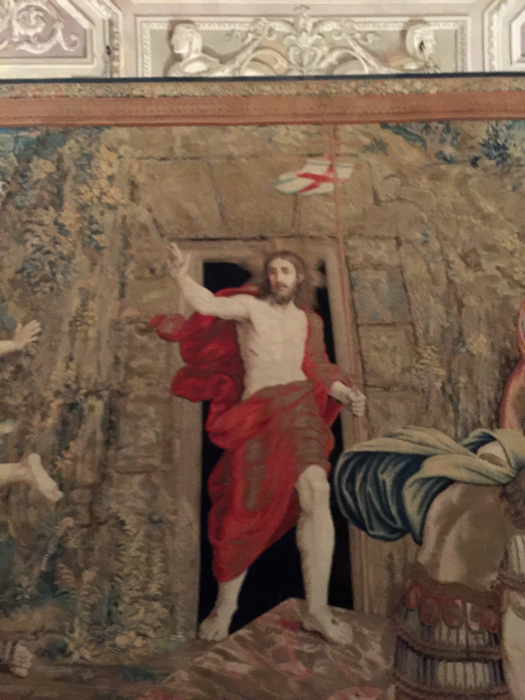 |
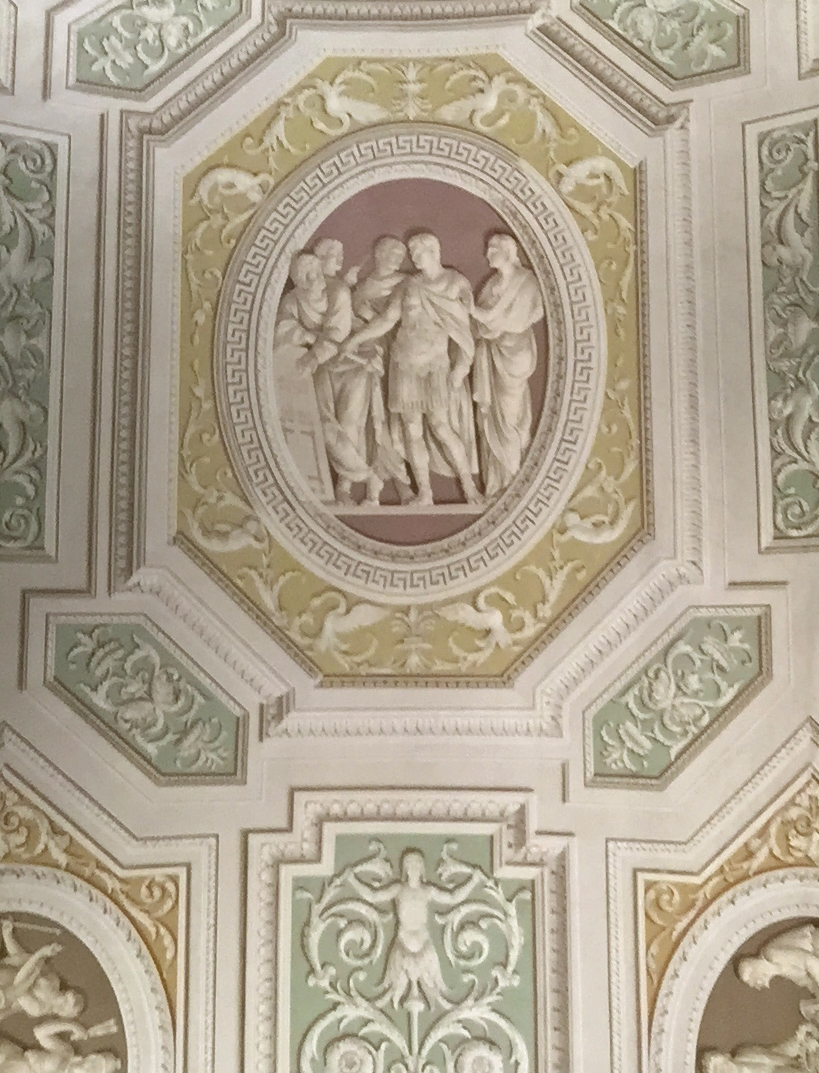 |
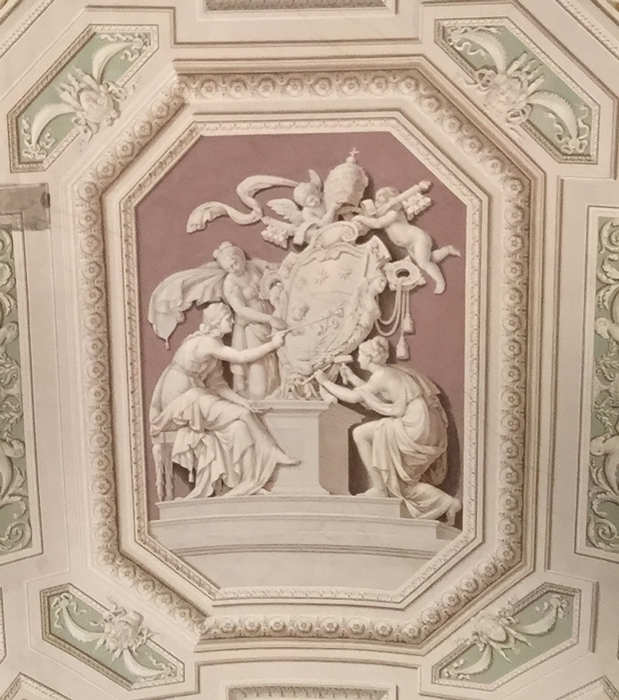 |
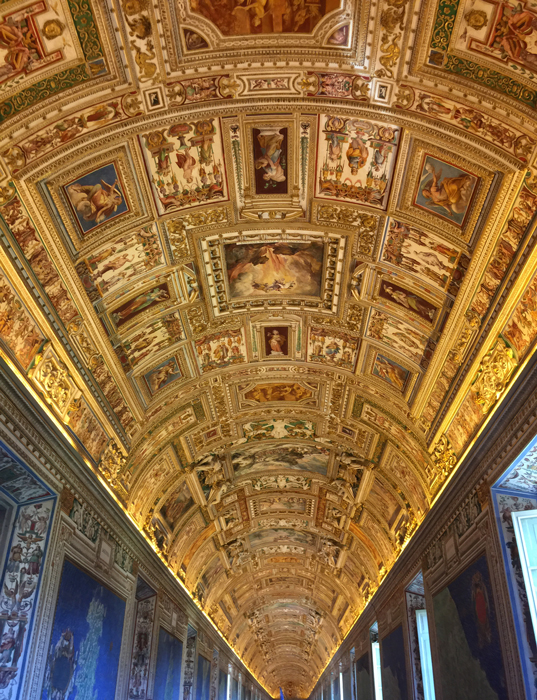 |
| Ceiling
of the Maps Gallery, which contains a series of painted topographical
maps of Italy based on drawings by friar and geographer Ignazio
Danti. It took Danti three years (1580–1583) to complete the 40
panels of the 120 m long gallery. The decorations on the vaulted
ceiling are the work of a group of Mannerist artists including Cesare
Nebbia and Girolamo Muziano. |
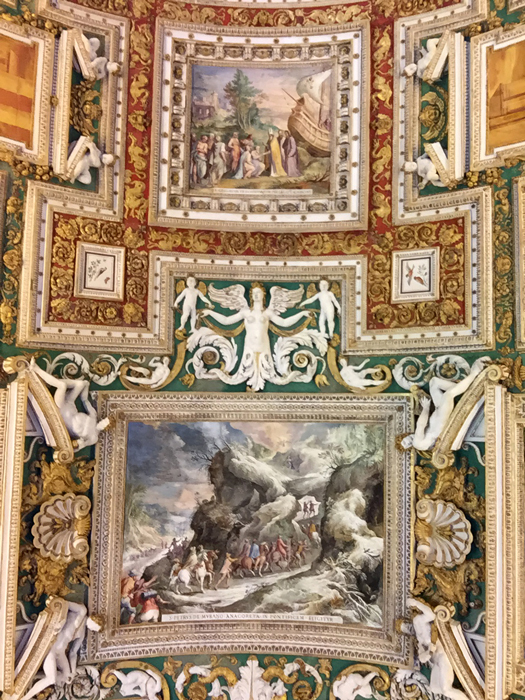 |
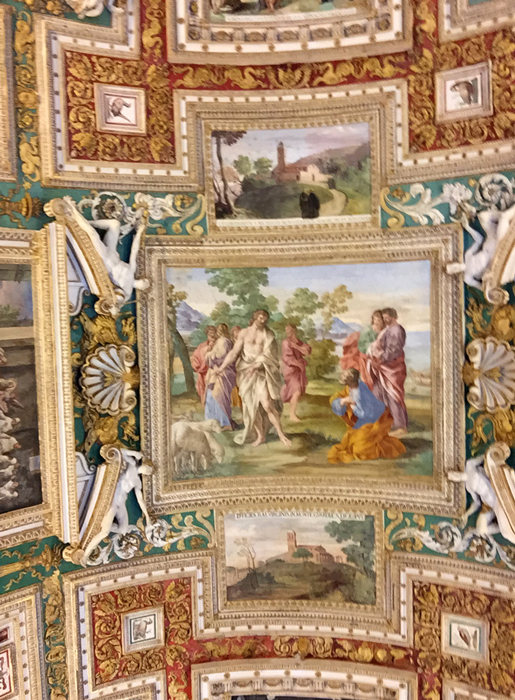 |
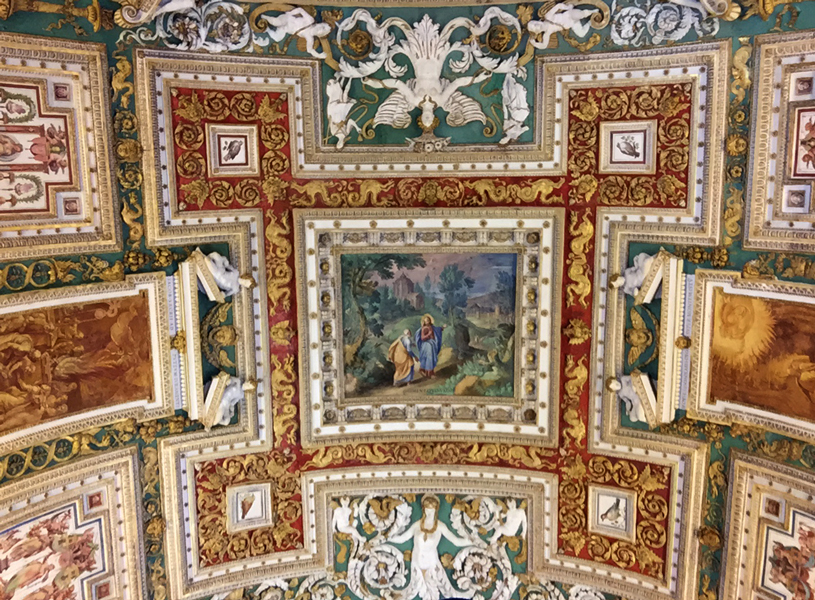 |
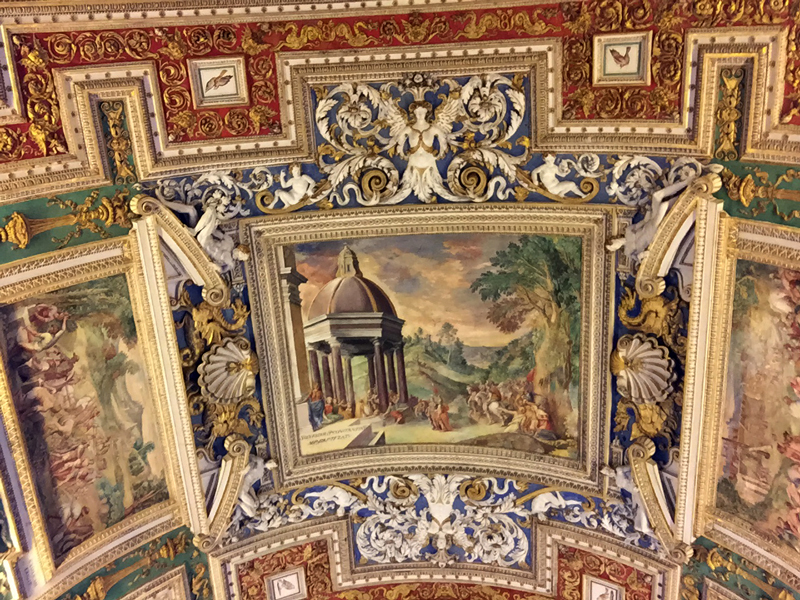 |
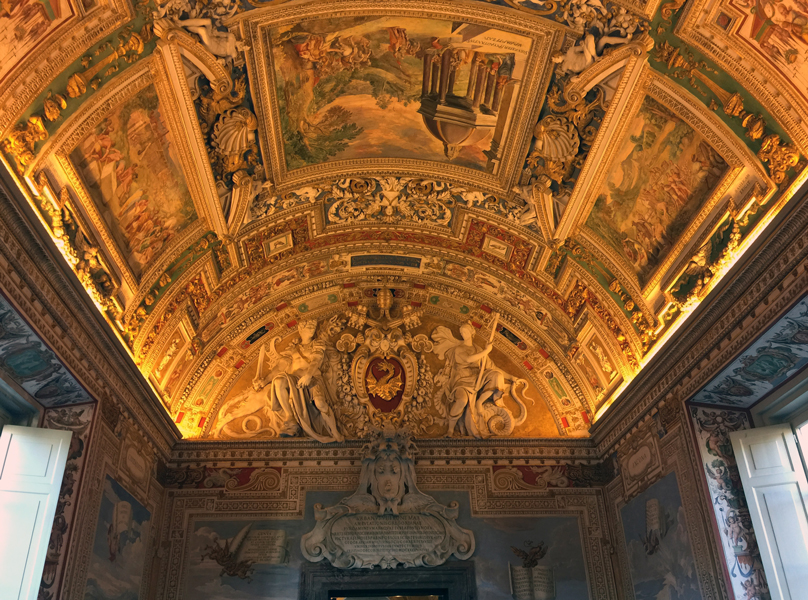 |
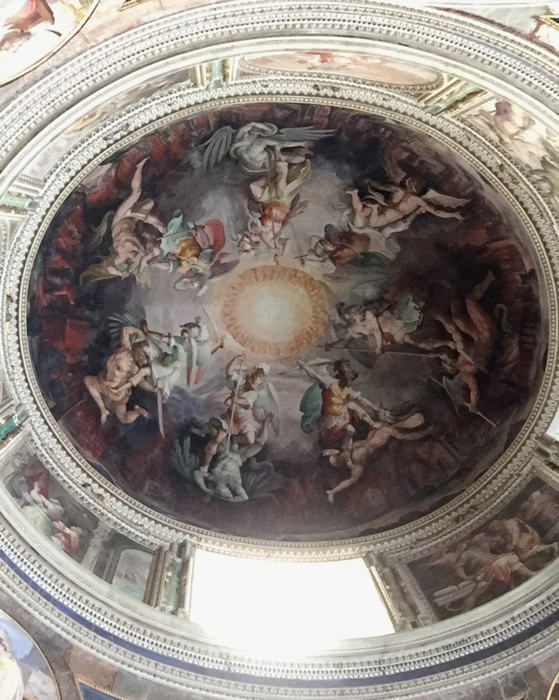 |
| Angels fight demons in this painted dome. |
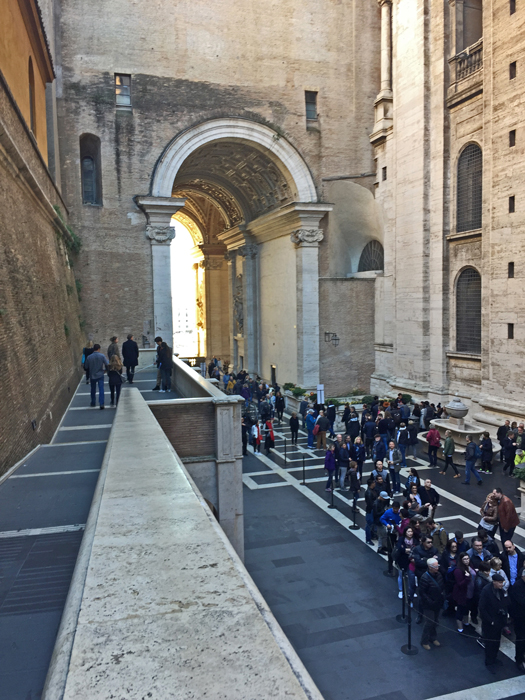 |
| View after exiting the Sistine Chapel through the tour group door on the way to St. Peter's. |
 |
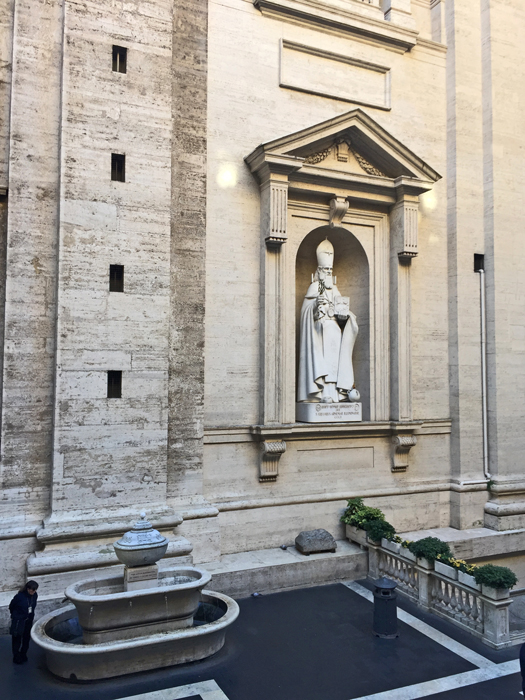 |
| Waiting
area and fountain. The statue is of Saint Gregory the Illuminator
- Grigor Lusavorich (c. 257 to c. 331) - the patron saint and first
official head of the Armenian Apostolic Church. He was a
religious leader who is credited with converting Armenia from paganism
to Christianity in 301. Armenia thus became the first nation to
adopt Christianity as its official religion. |
St. Peter's Basilica

|
| Panoramic view of St. Peter's Square from the entrance to the basilica. The colonades on the left and right contain 140 statues of saints. The chairs are set up for a papal address which occured within the next day or two. |
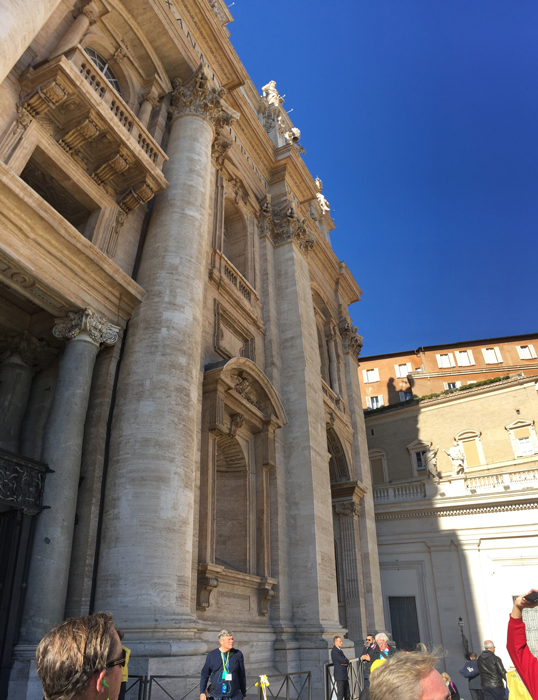 |
| Outside the entrance to St. Peter's. Designed principally by Donato Bramante, Michelangelo, Carlo Maderno and Gian Lorenzo Bernini, St. Peter's is the most renowned work of Renaissance architecture and one of the largest churches in the world. |
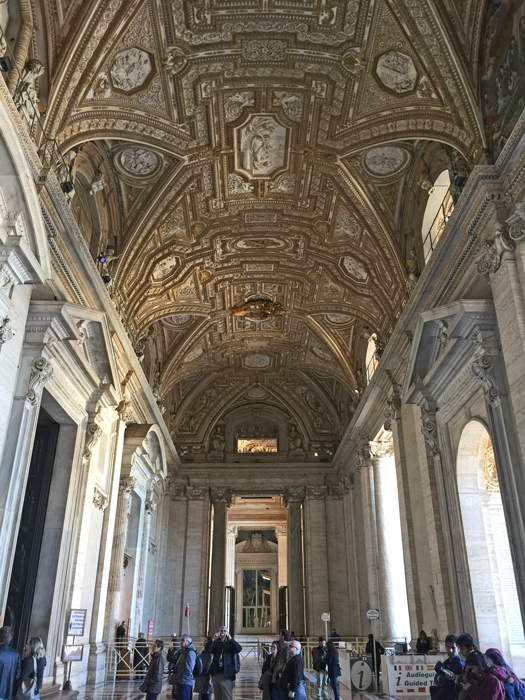 |
| The Portico of St. Peter's spans the front of the basilica. The ceiling vaults contain paintings and sculptures of popes, saints and episodes from the lives of Peter and Paul. |
Inside St. Peter's Basilica
 |
| Statue of St. Ignatius of Loyola (1733), by Camillo Rusconi. |
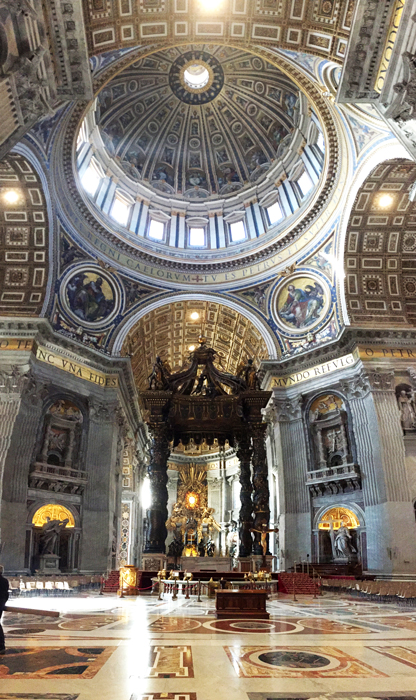 |
| Altar and dome. The letters under the windows of the dome are nine feet tall. Those beneath the arches are six feet tall. |
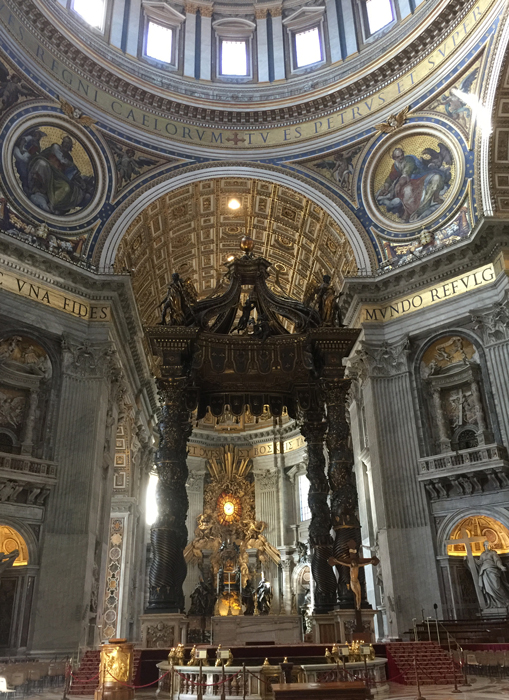
|
| St.
Peter's Baldachin - Baldacchino di San Pietro - is a large Baroque
sculpted bronze canopy, technically called a ciborium or baldachin,
over the high altar of St. Peter's. The baldachin is at the centre of
the crossing and directly under the dome of the basilica. Designed by
the Italian artist Gian Lorenzo Bernini, it was intended to mark, in a
monumental way, the place of Saint Peter's tomb underneath. |
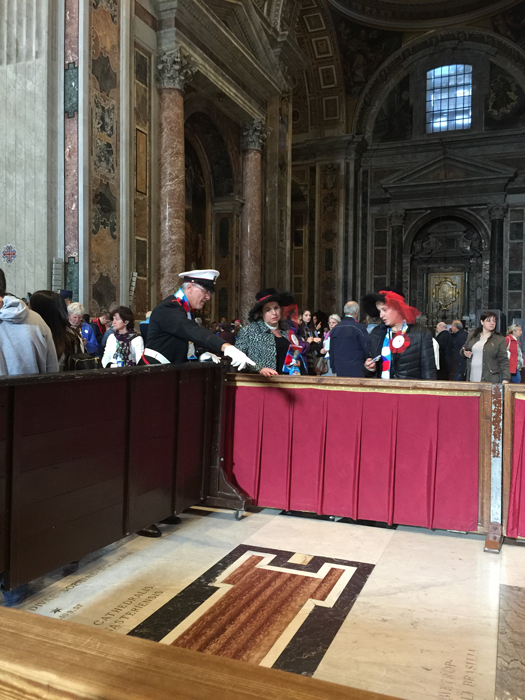 |
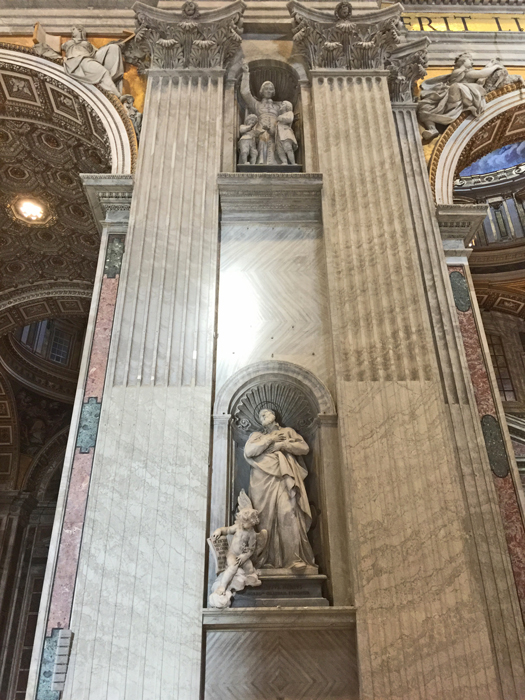 |
| St. Philip Neri - Founder of the Oratorians; statue by Giiovanni Battista Maini, 1737. |
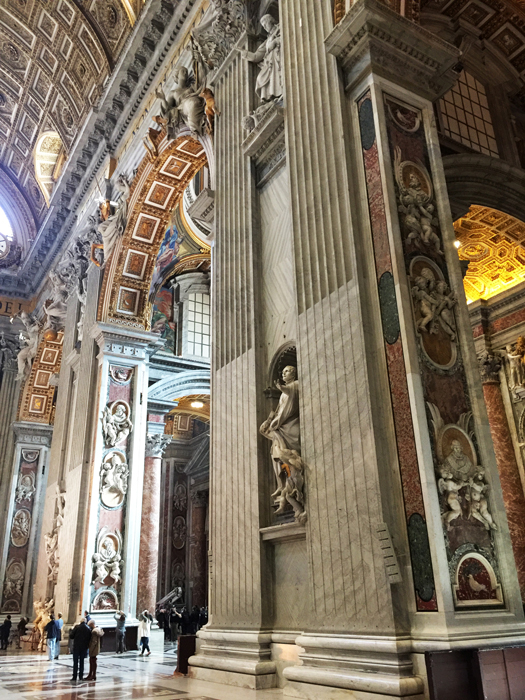 |
| This column contains a statue of Statue of Saint Camillus by sculptor Pietro Pacilli. |
 |
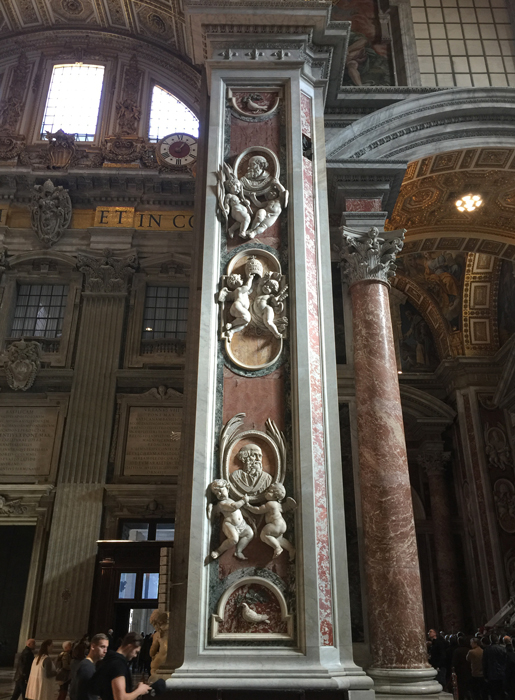 |
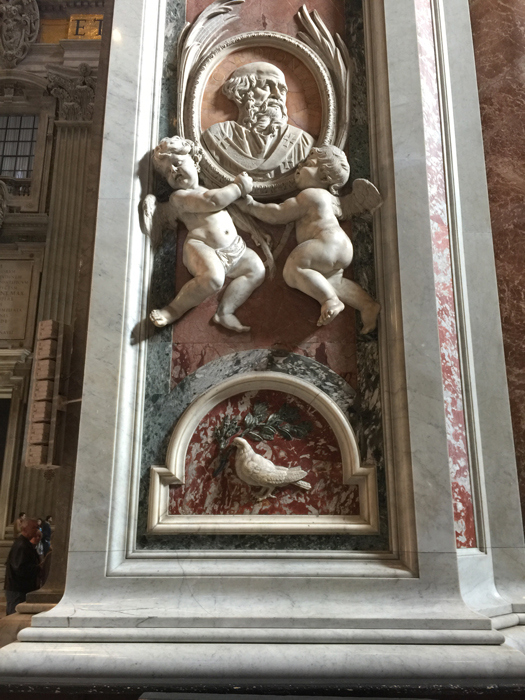
|
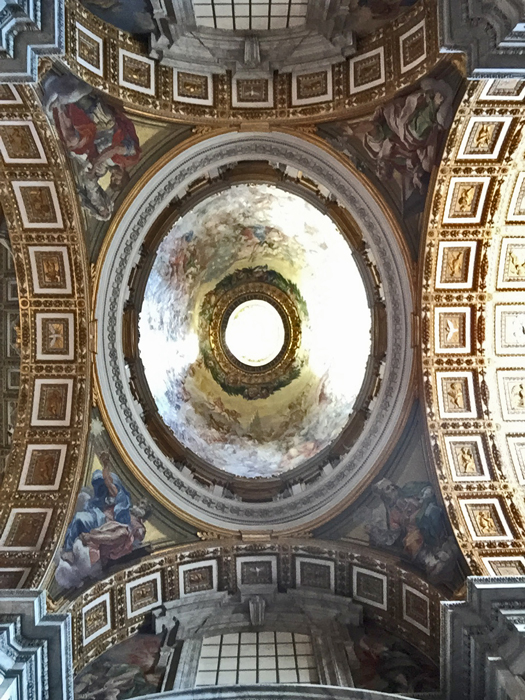 |
 |
| The PietÓ by Michelangelo. The
statue was commissioned for Cardinal Jean de BilhŔres, who
was the French representative in Rome. The sculpture, in Carrara marble,
was made for the cardinal's funeral monument, but was moved to its
current location, the first chapel on the right as one enters the
basilica, in the 18th century. It is the only piece Michelangelo ever
signed. |
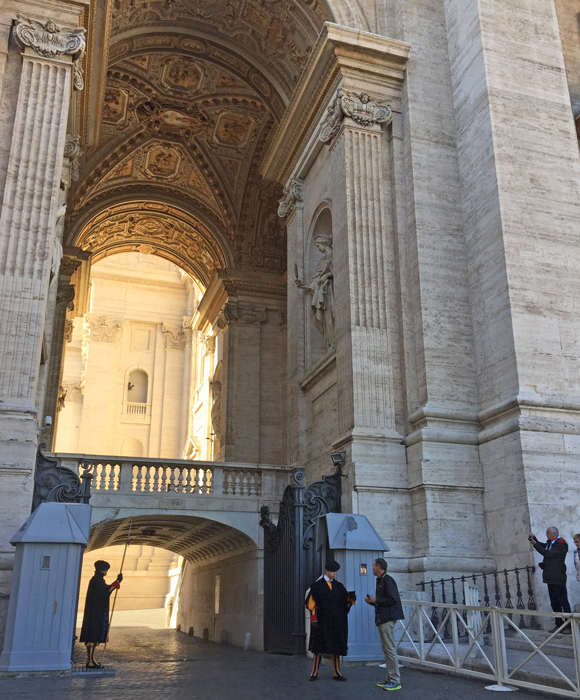 |
| Swiss Guards provide assistance to tourists as well as protect the pope. |
In St. Peter's Square
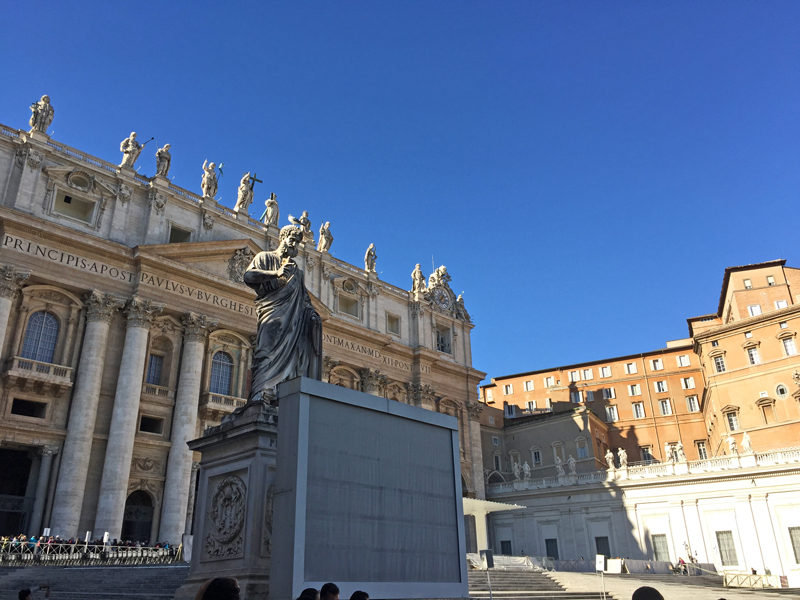 |
| Statue of St. Peter. |
 |
| One of two fountains in St. Peter's Square. |
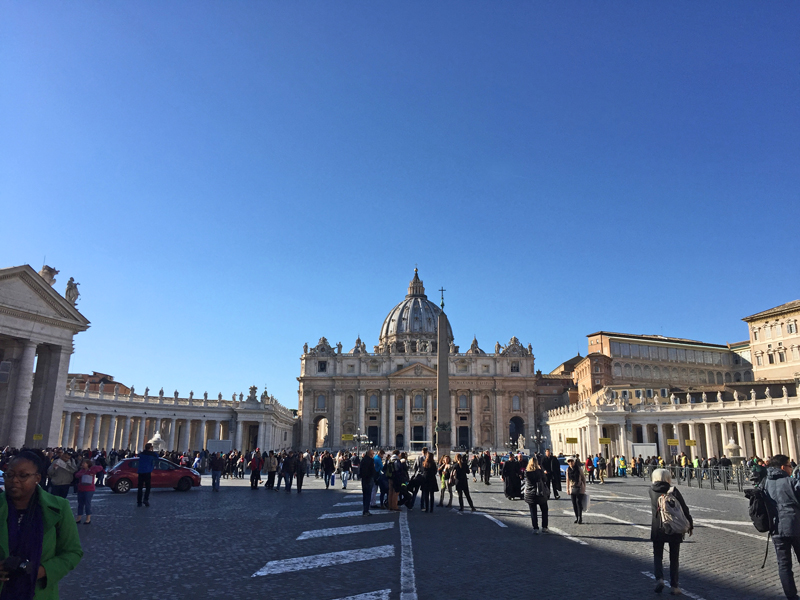 |
| View of St. Peter's Basilica. |
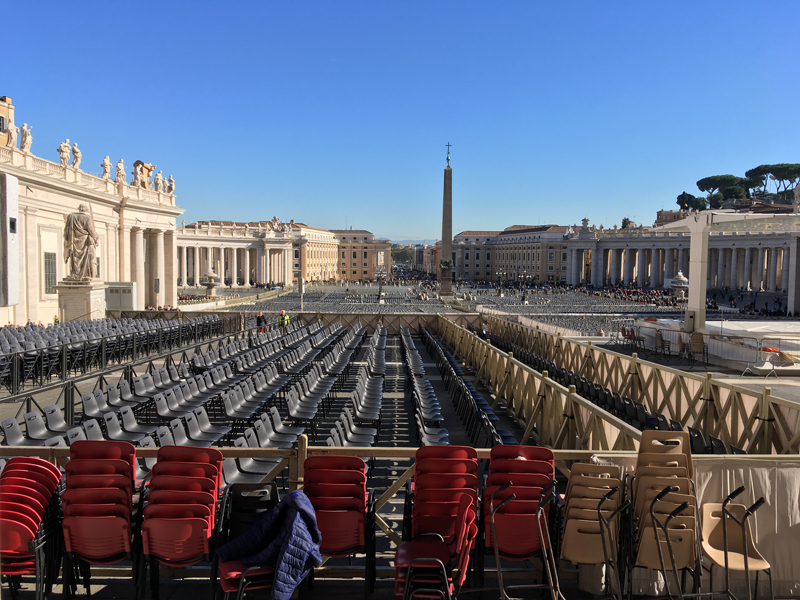 |
| According
to the website of St. Peter’s Basilica, the obelisk standing in St.
Peter’s Square came from Heliopolis, Egypt, where it was believed to
have been built by the Pharaoh Mencares in 1835 B.C. in honor of the
sun. It is hewn from a single block of pink granite and stands 25.31m
high. It was brought to Rome by Caligula
in 37 B.C.
Sixtus V had Domenico Fontana move it in 1586 to the center of St.
Peter's Square. It is also a sun dial; its shadows mark noon over
the signs of the zodiac in the white marble disks in the paving of the
square. |
Back to Italy 2016 Index
Colosseum
Rome - Around the City
Rome at Night
Rome Bus Tour